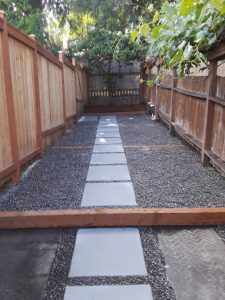A Guide to Lawn Seeding for a Healthy Yard
A lush, green lawn enhances the beauty of your home, provides space for outdoor activities, and increases property value. Whether you’re starting a new lawn or repairing an existing one, lawn seeding is an effective way to establish a healthy yard. Follow these steps to ensure your lawn grows strong and healthy.
Top Tips for Lawn Seeding
1. Choose the Right Grass Seed
- Consider Your Climate: Choose grass types suited for your climate. In Seattle, cool-season grasses like Perennial Ryegrass, Kentucky Bluegrass, and Tall Fescue thrive in the temperate climate.
- Purpose of the Lawn: If your lawn will experience heavy foot traffic, opt for durable grasses that can withstand wear, like Perennial Ryegrass.
2. Test Your Soil
- Soil pH and Nutrient Levels: Conduct a soil test to check pH and nutrient content. Most grasses prefer a pH of 6.0-7.0. Adjust the soil with lime or sulfur to correct pH levels and use fertilizers to boost nutrients.
3. Prepare the Seedbed
- Clear the Area: Remove debris, weeds, and old grass to prevent competition for water and nutrients.
- Loosen the Soil: Aerate the soil using a rototiller or garden fork to improve seed-to-soil contact.
- Level the Ground: Rake the area to create a smooth, even surface, filling low spots and removing high spots.
4. Seed Application Techniques
- Use a Seed Spreader: Use a broadcast or drop seed spreader to evenly distribute the seed across the seedbed, following the instructions on the seed package.
- Overseeding: To repair an existing lawn, spread grass seed over the current lawn without disturbing the existing grass.
5. Roll the Seedbed
- Compact the Soil: After applying the seeds, gently roll the area with a lawn roller to ensure good seed-to-soil contact, which is essential for germination.
6. Cover the Seeds
- Lightly Rake the Area: If necessary, lightly rake the soil to ensure the seeds make good contact without being buried too deeply.
- Use Straw or Mulch: Cover the seeds with a thin layer of straw or mulch to protect them from birds and reduce erosion while retaining moisture.
7. Watering
- Initial Watering: Gently water the area to avoid washing away seeds. Keep the soil moist (not soggy) during the 7-14 day germination period.
- Regular Watering Schedule: After germination, establish a consistent watering routine to promote healthy growth.
8. Fertilization
- Starter Fertilizer: Apply a starter fertilizer high in phosphorus (middle number in N-P-K) to support root development. Follow application rate recommendations to avoid over-fertilizing.
9. Mowing
- Wait Before Mowing: Allow the grass to grow to 3-4 inches before the first mow. This helps establish deep roots and encourages healthy growth.
10. Monitor and Maintain
- Weed Control: Watch for weeds as the grass establishes. Hand-pull or spot-treat weeds with appropriate herbicides.
- Observe Growth: Regularly inspect for signs of pests or diseases, and adjust your maintenance routine accordingly.
The Process of Lawn Seeding
| Step | Description |
|---|---|
| Choose the Right Grass Seed | Select the appropriate grass varieties based on your climate and lawn usage. |
| Test the Soil | Conduct soil tests to assess pH and nutrient levels, making necessary amendments. |
| Prepare the Seedbed | Clear debris, aerate the soil, and level the area for a smooth surface. |
| Seed Application | Use a seed spreader to distribute the seeds evenly across the prepared area. |
| Roll the Seedbed | Use a lawn roller to press the seeds into the soil for good contact. |
| Cover the Seeds | Lightly rake and cover with straw or mulch to protect the seeds. |
| Watering | Gently water the area and maintain consistent moisture during germination. |
| Fertilization | Apply a starter fertilizer to promote root development. |
| Mowing | Wait until the grass reaches 3-4 inches before mowing for the first time. |
| Monitor and Maintain | Regularly check for weeds, pests, and diseases, adjusting care as necessary. |
Benefits of Hiring a Contractor
While lawn seeding can be a DIY-friendly project, hiring a professional contractor offers several advantages:
Expertise and Knowledge
Contractors understand local climate conditions and soil types, ensuring that the right seed is chosen and the proper seeding techniques are used.
Access to Quality Products
Professionals have access to high-quality seeds, fertilizers, and equipment, ensuring the best results for your lawn.
Time Savings
A contractor handles the work efficiently, saving you time and effort.
Consistent Results
Professionals ensure an even application of seed and proper soil preparation, increasing your chances of establishing a healthy lawn.
Ongoing Maintenance Options
Contractors provide services for fertilization, weed control, and pest management, ensuring the long-term health of your lawn.
Problem-Solving
Contractors can identify issues early, such as soil deficiencies or pests, and adjust their strategies accordingly.
Cost-Effectiveness
Hiring a contractor can save you money by avoiding mistakes and ensuring that your lawn grows strong and healthy, requiring less repair later.
Liability and Insurance
Reputable contractors carry insurance, offering protection against accidents or damage to your property.
Final Thoughts
Lawn seeding is a vital step in creating a beautiful and healthy lawn. By following these steps and considering the benefits of hiring a professional contractor, you can ensure your lawn thrives and remains lush for years to come. Whether you’re starting from scratch or repairing an existing lawn, expert knowledge and high-quality materials will set your lawn up for success. Ready to transform your yard? Let a professional handle your lawn seeding and help you achieve a lush, vibrant landscape.



















